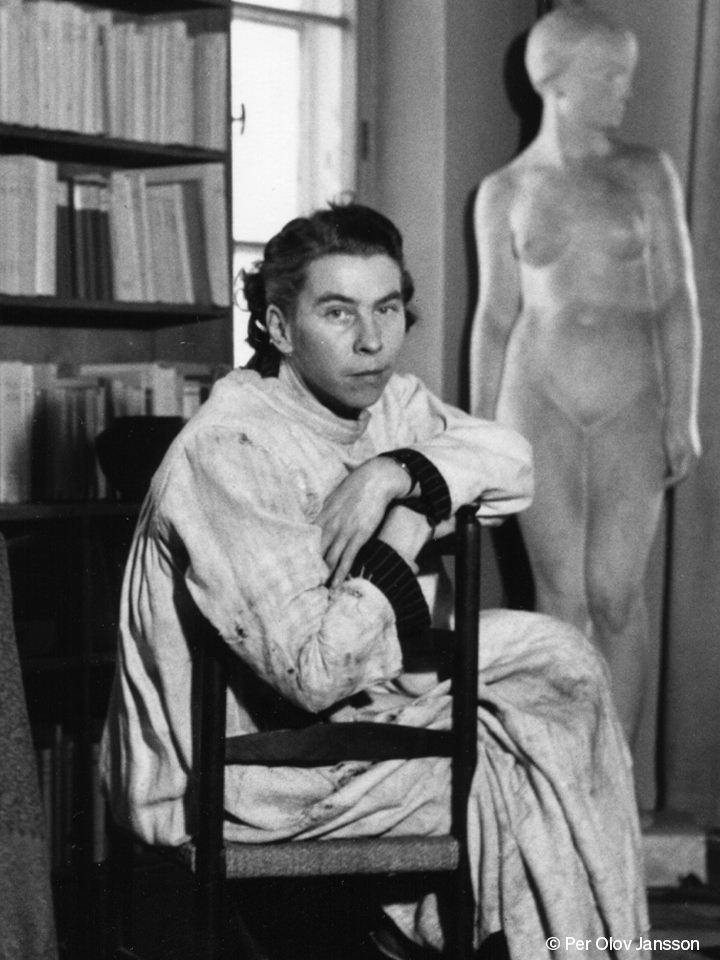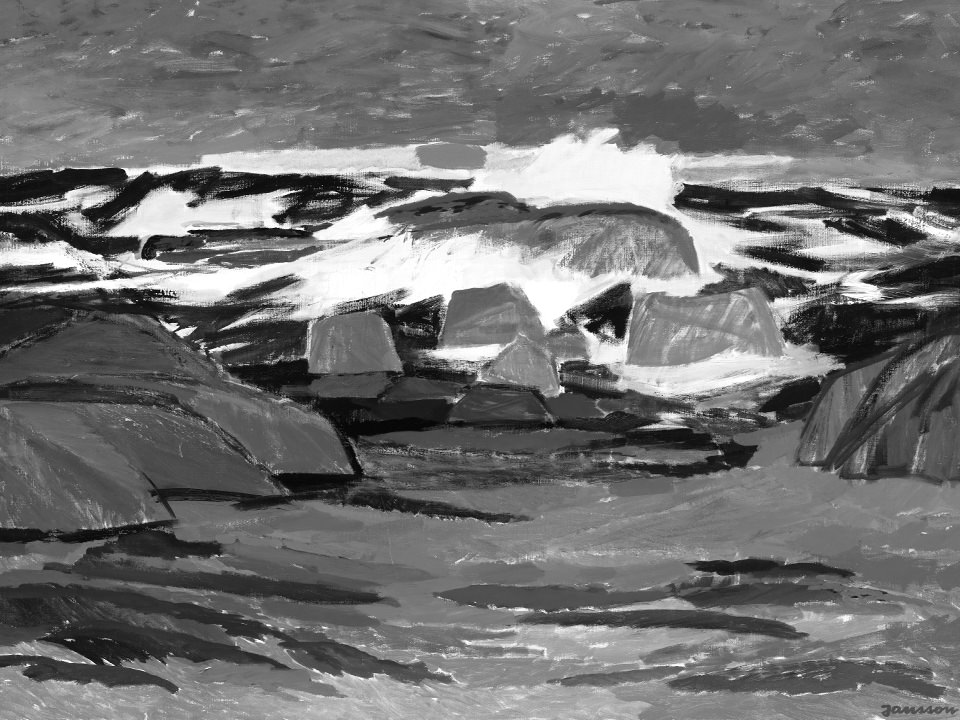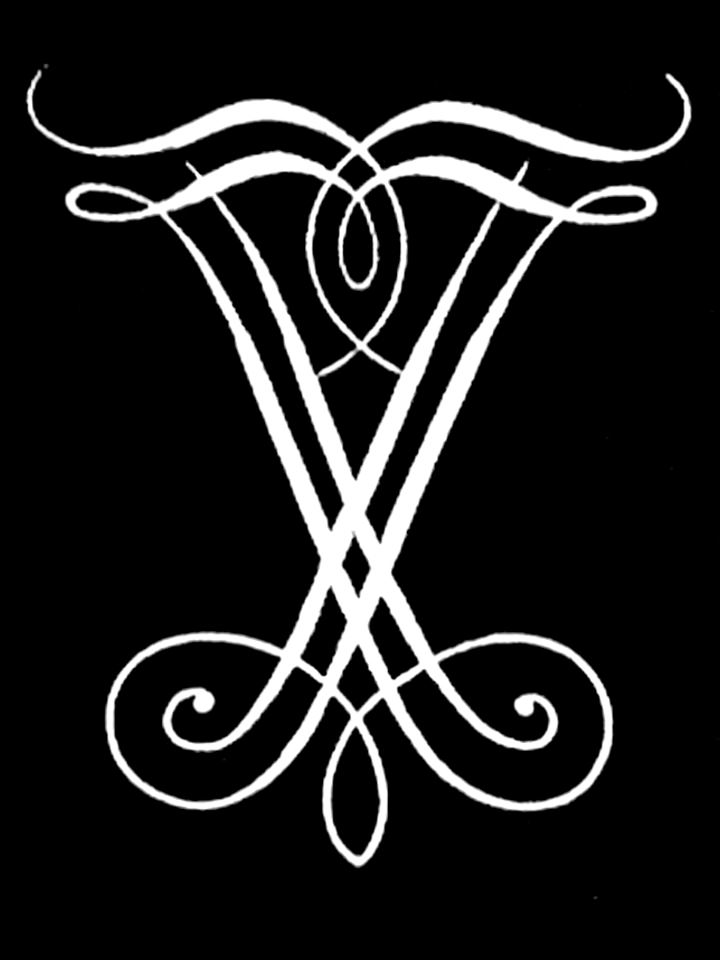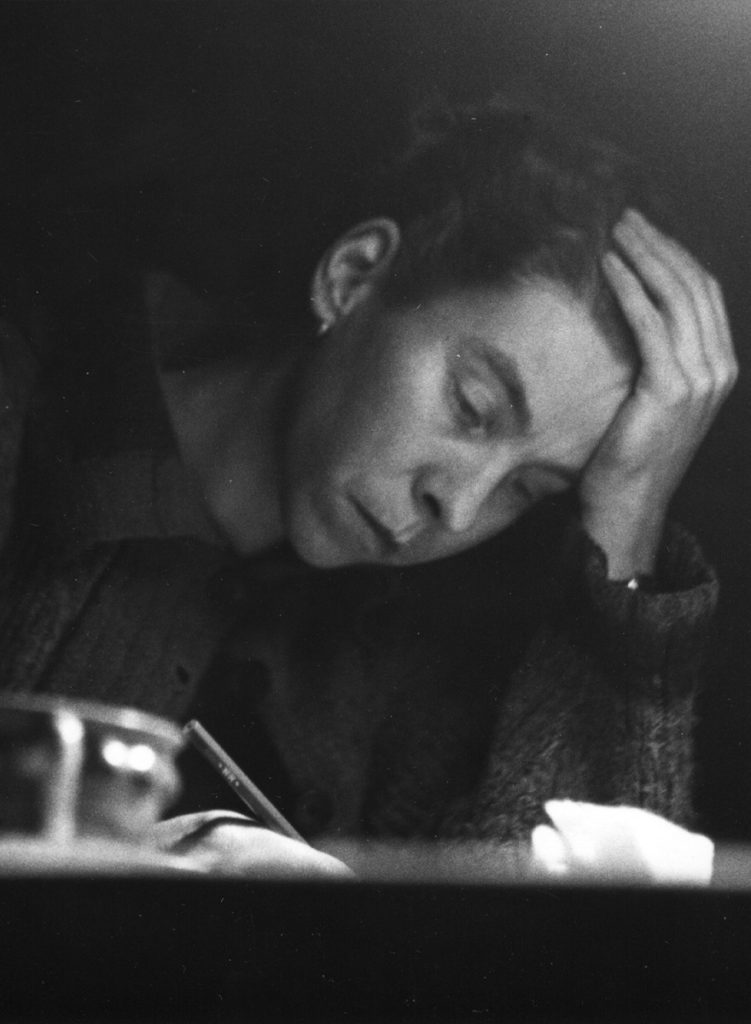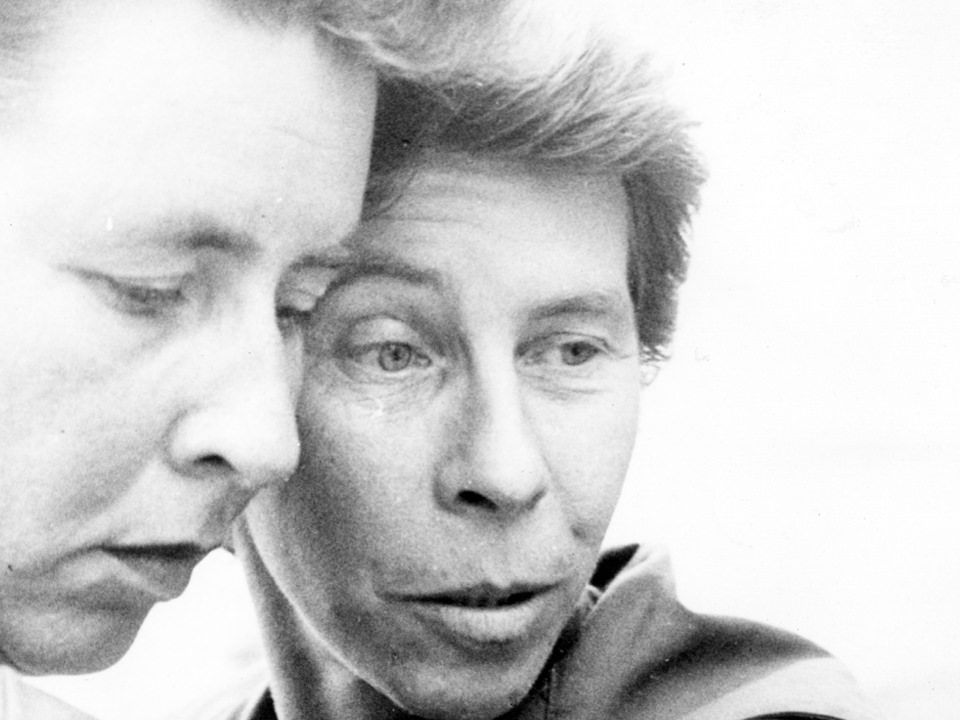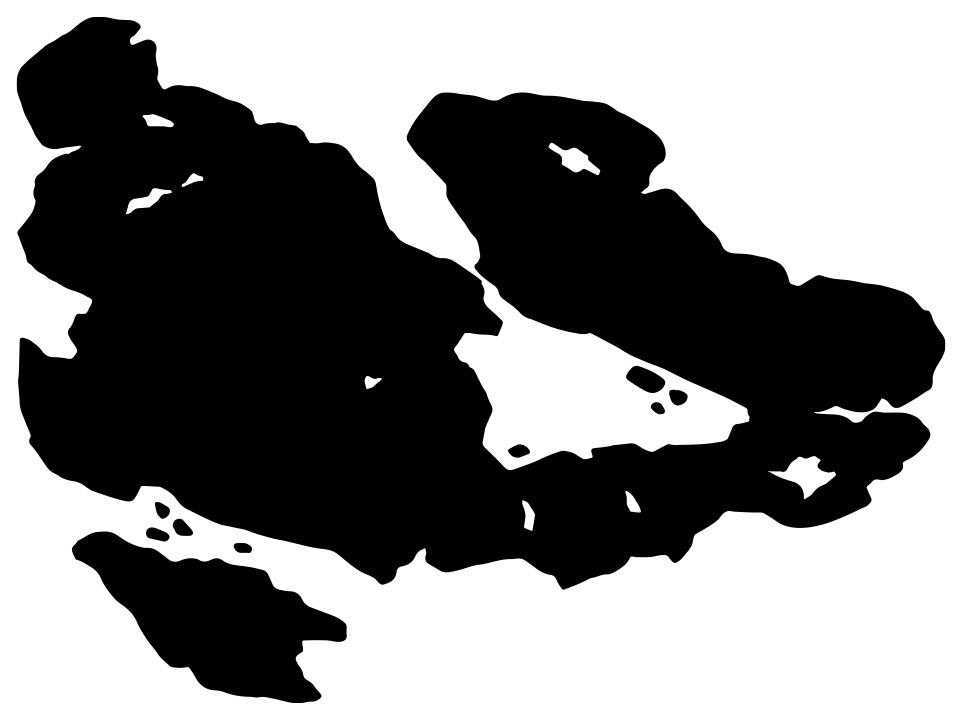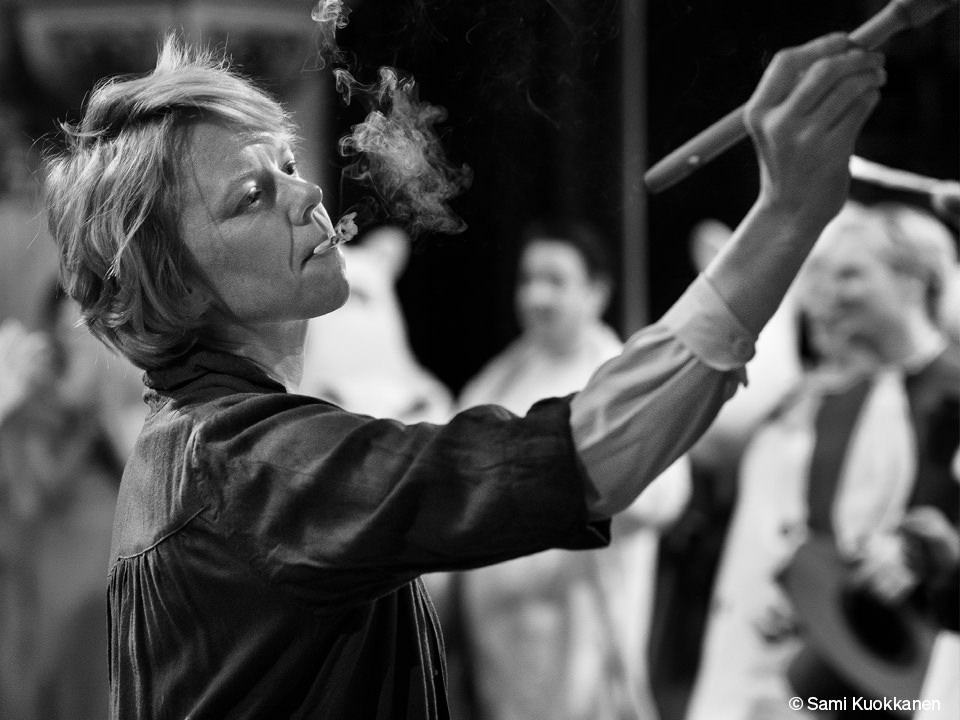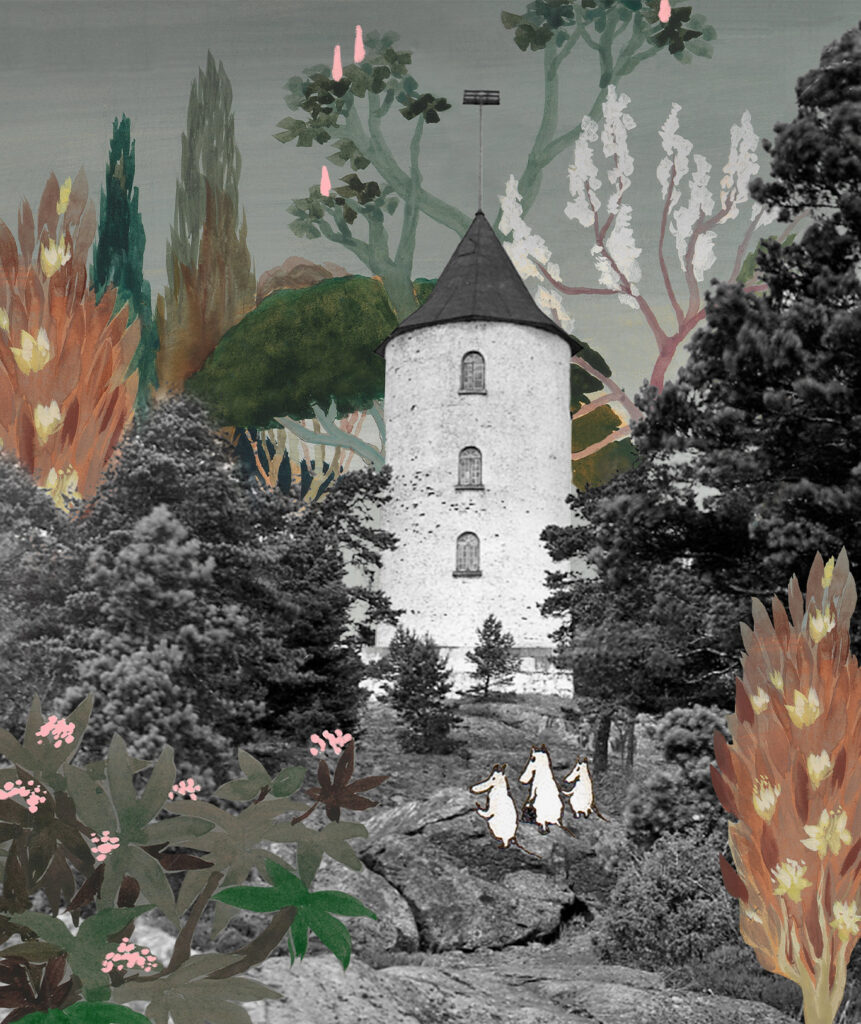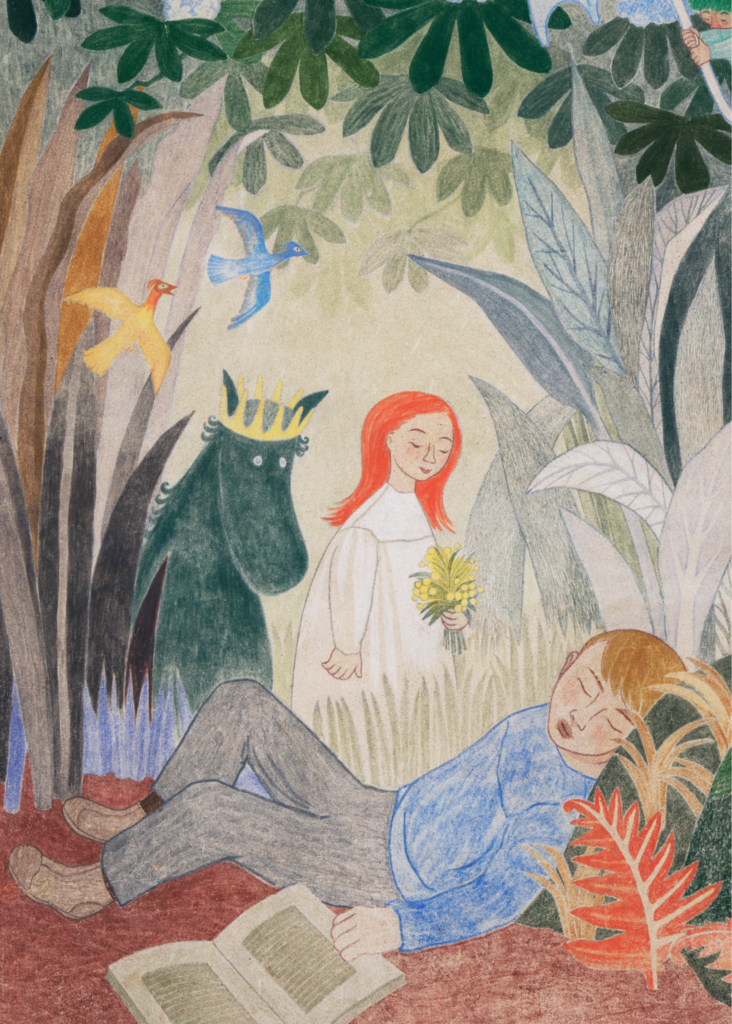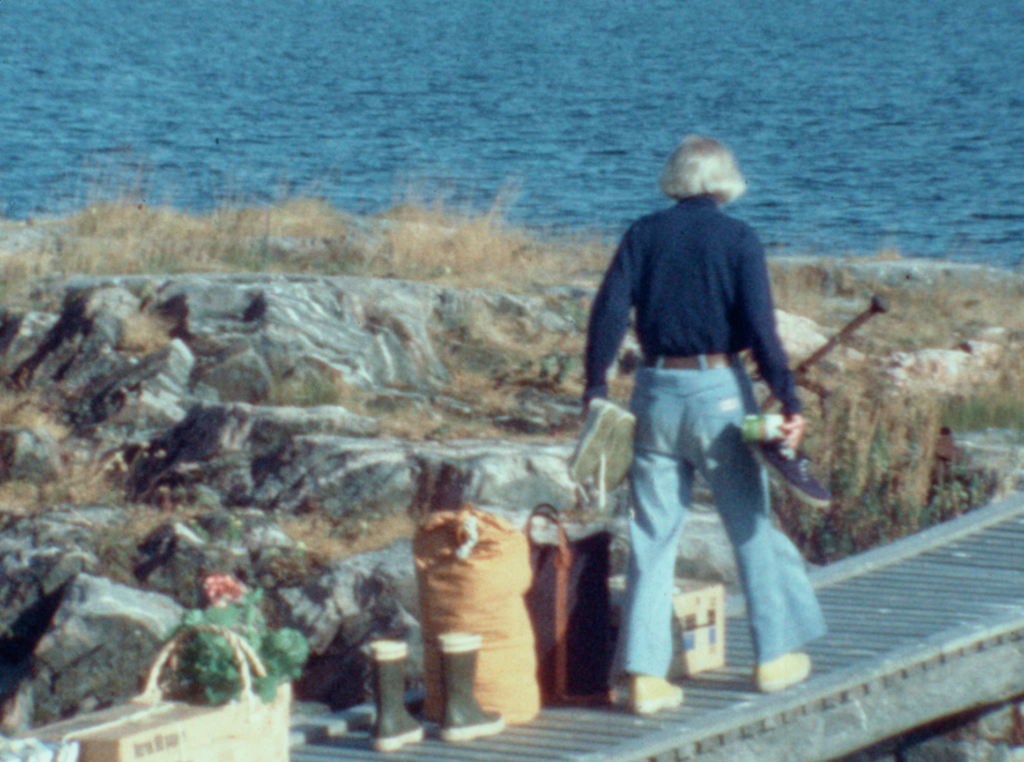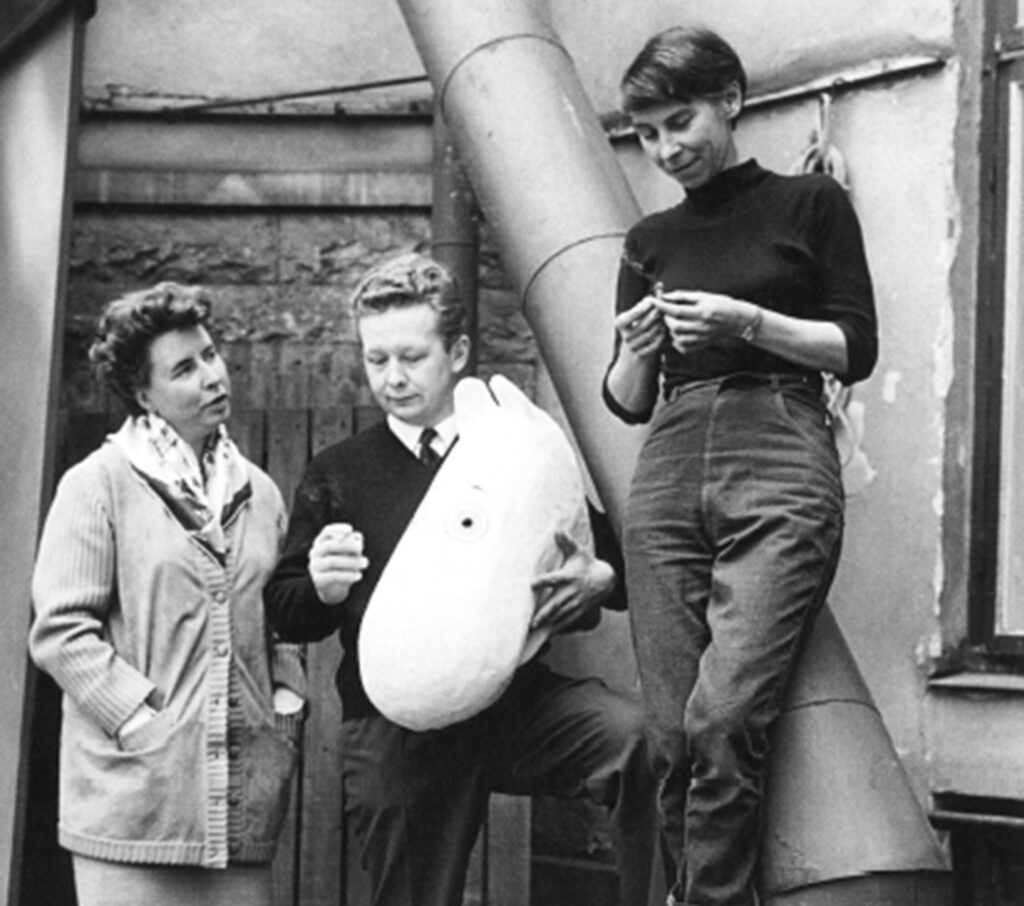
Moomin theatre – from headless trolls to 100 puppets on stage

Moomin theatre has been a concept almost from the beginning. But it’s one thing to draw a Moomintroll, and another to make it work in three dimensions on stage. See how the Moomintrolls have developed from the first Moomin theatre play at the Swedish Theatre in 1949, to the latest (and first) theatrical interpretations of the Moomin comics, Kris och Katastrof i Mumindalen (“Crisis and Catastrophe in Moominvalley”) at Lilla Teatern in Jansson’s home town Helsinki in Finland. Don’t miss the minidocumentary at the end of this article!
Tove Jansson was attracted to the theatre and had already had it as a motive for her paintings, when the chance to work with theatre for real through her Moomin stories emerged.
“It was the palace of possibilities, the place where everything could be swapped and transformed and stand for something else – a perfect setting for Tove’s never-ending search for new means of expression”, Tove Jansson researcher and professor of literature Boel Westin writes in her biography Life, art, words. One might even read something of Jansson herself into Emma the stage rat’s quote from Moominsummer Madness (1954):
“A theatre is the most important sort of house in the world, because that’s where people are shown what they could be if they wanted, and what they’d like to be if they dared to and what they really are.”
The first Moomin theatre play 1949
It was the theatre director Vivica Bandler, Tove Jansson’s friend whom she was also romantically involved with for a short time, who came up with the idea of putting Moomin on stage. However, it didn’t come easily, and the play was originally refused by the commissioning committee, as the members considered the play as too eccentric and not suitable for children. The committee had to reverse its decision after protests, and thus the first Moomin play, Moomintroll and the Comet, premiered at the Swedish Theatre in 1949, directed by Vivica Bandler.
With the first Moomin theatre play, also the challenge of making three-dimensional Moomintrolls for the theatre scene emerged. Tove Jansson designed the costumes herself, and the first theatre trolls had big stomachs, long snouts and holes for the eyes. This prototype she then developed further for future performances and plays.
The play was both praised for its originality and criticized – some questioned how suitable the theme of the end of the world is in a children’s play, and there was moral panic of some sorts when parents where shocked by the Moomins drinking and cursing on stage: ”One complained that their little son was demanding ‘mahogany-grog’ and had started to swear, while another reported that her son was running round their flat with outstretched ‘paws’ claiming to be a Hattifattener and mumbling, ‘O horizons, O horizons.’”, Boel Westin writes.
Upset readers wrote to the biggest Swedish newspaper in Finland, and Tove Jansson engaged herself in the debate – here in an answer to the signature “Bewildered father”:
”…‘hellfire’ [helveteseld] is a harmless expression and ‘Groke’ [Mårran] is just a name; both of these happen to occur in my play, while ‘hell’s growl-jumps’ [helvetes morrhoppor], as an expression, seems to me only mildly vulgar. If you are really determined to, you can read an ugly meaning in any word you like. If ‘begrowled’ is a ‘terrible’ [förfärligt] expression, then the very word ‘terrible’ must also be a damned [förbannat] expression. The prophet in the play drinks wine mixed with mace; as his creator, I am utterly bewildered to learn that this makes him a boozer.” (quoted in Life, art, words)
But Tove Jansson, who’d more or less lived at the theatre for months before the premiere, had got a taste for the genre.
Moomin at Lilla Teatern 1958
After the first Moomin theatre play it took almost ten years until Moomintroll and his friends entered the stage again – this time at Lilla Teatern (“The Small Theatre”) in Helsinki. However, Tove Jansson hadn’t left the theatre completely – influences of theatrical esthetics can be seen in the first Moomin picture book The Book about Moomin, Mymble and Little My (1952). Two years later, the next Moomin novel, the Shakespeare-inspired comedy of errors Moominsummer Madness (1954), which takes place on a floating theatre, is published.
The second Moomin theatre play, Troll i kulisserna (“Troll in the Wings”), at Lilla Teatern, is based on this particular book, and it became a huge success, opening the doors to the other Nordic theatre scenes, both of the actors and for Lilla Teatern.
Lasse Pöysti, who played Moomintroll, called the performance in Stockholm 1959 “an unqualified triumph”, and according to Birgitta Ulfsson, who played the stage rat Emma “parnassus went on pilgrimage to the theatre”. The success story was complete when the play came to Oslo in 1960 – when Tove Jansson herself played the rear end of the lion. Lasse Pöysti write in his memoirs that this was the best theatre play of his life. (A thrilling side note is that Pöysti and Ulfsson also were the grandparents of the actress Alma Pöysti, who played Tove Jansson in “Tove”, the first, praised biopic about her.)
This Moomin theatre play was also directed by Vivica Bandler, Tove Jansson wrote the manuscript and designed the costumes and Erna Tauro wrote the music. This is also the starting point of Jansson’s and Tauro’s cooperation, which resulted in several famous Moomin songs during the years to follow. Another aspect making this play special was that the Moomintrolls took their heads off on stage so that the audience both could hear and see the actors.
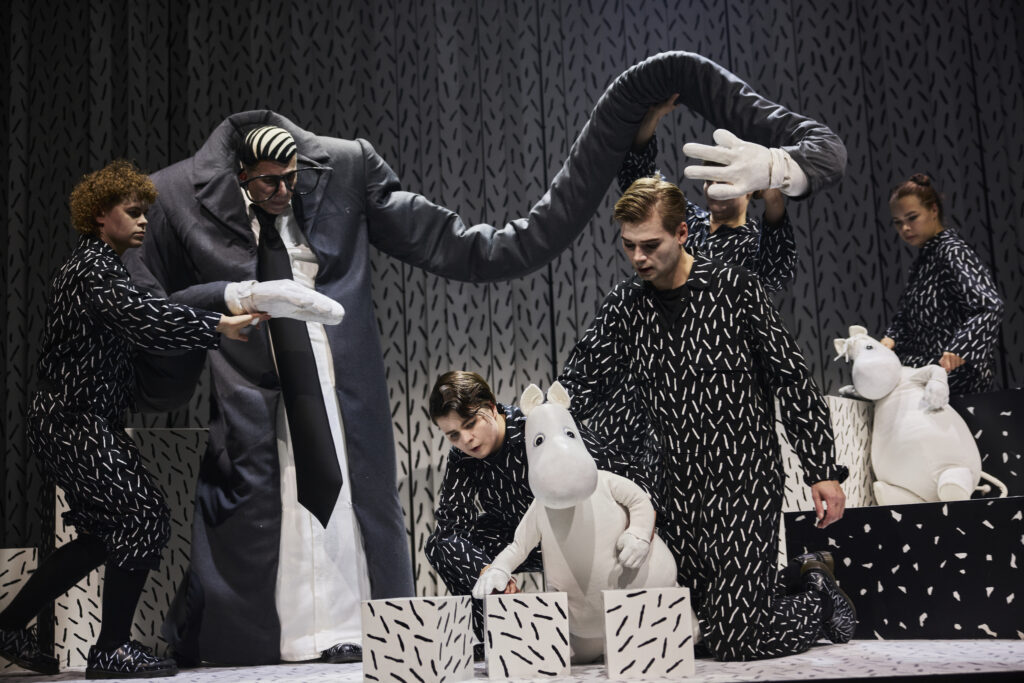
 The long arms of Dr Hatter are manoeuvred by two puppeteers in “Kris och katastrof i Mumindalen” by Jakob Höglund at Lilla Teatern in Helsinki (2022). Photo: Linus Lindholm.
The long arms of Dr Hatter are manoeuvred by two puppeteers in “Kris och katastrof i Mumindalen” by Jakob Höglund at Lilla Teatern in Helsinki (2022). Photo: Linus Lindholm.Moomin’s comeback at Lilla Teatern
During the past decades, the Moomin stories have inspired numerous theatre plays, concerts, opera and ballet, and nowadays, Moomin fans all over the world can experience Moomin on stage.
A recent example of how the Moomin theatre eastetics has developed over the years is Kris och katastrof i Mumindalen (“Crisis and catastrophe in Moominvalley”) when the Moomins after 64 years make a come back at Lilla Teatern, directed by Jakob Höglund and Annina Enckell as playwright.
It’s the first time that Tove and Lars Jansson’s Moomin comics, created 1954-75, are used as material for a theatre play, and in Höglund’s creative direction they are turned into a visual, physical and rhythmic puppet show, leaving the viewers with a warm heart and a smile on their faces. Half of the tickets were sold already beforehand, and after the biggest Finnish newspaper, Helsingin Sanomat gave the play four stars, followed by praises by Svenska Yle (the Swedish section of the Finnish public broadcasting company), it’s bound to be a success.
As a reference to the comics, the whole play – its decor, puppets and costumes – is in black and white, which adds to the sense of the ensemble on stage as one organism, even though it’s comprised of ten actors. This is no small challenge, as the actors and puppeteers manoeuvre as many as 100 two and three-dimensional puppets, made by puppet designer Heini Maaranen.
The original music in the play is written by Robert Kock to texts by Annina Enckell. As with Erna Tauro, the piano is on stage, like in the first Moomin theatre play at Lilla Teatern.
The director Jakob Höglund, who’s also the artistic director of Lilla Teatern, has dreamed of making a Moomin theatre play since the beginning of his career ten years ago:
“Ever since the start of my career as a director, I’ve dreamed of making scenic art out of the Moomins and their friends and it’s obvious it should happen at Lilla Teatern, Höglund sais.
Here you can se a mini documentary about the play and Lilla Teatern’s Moomin history:

